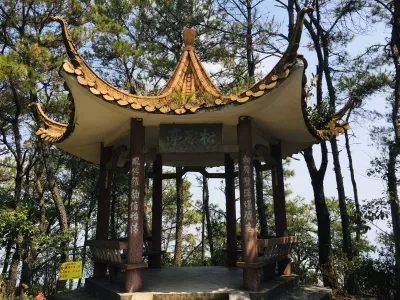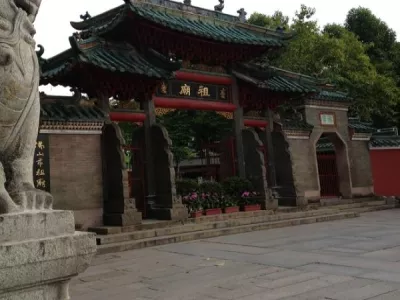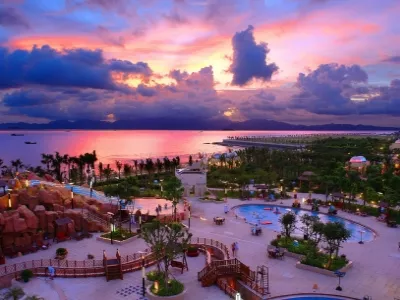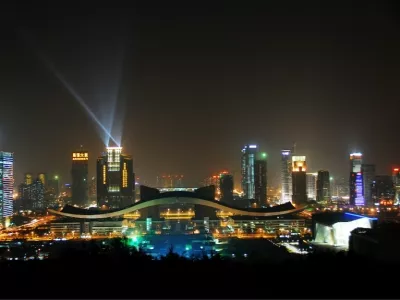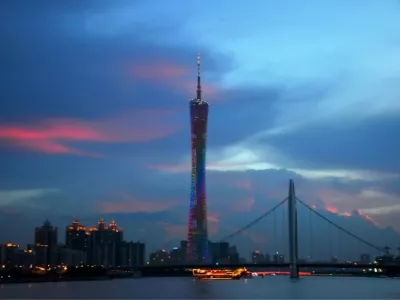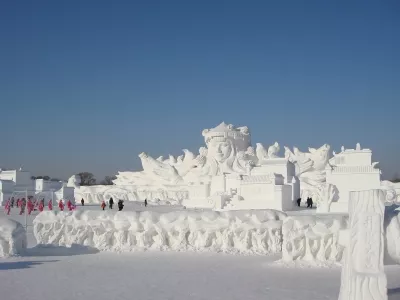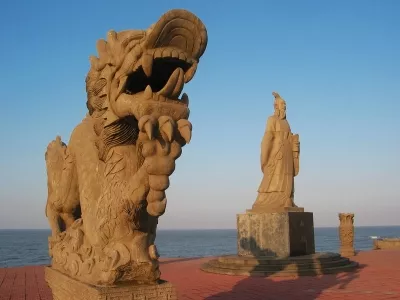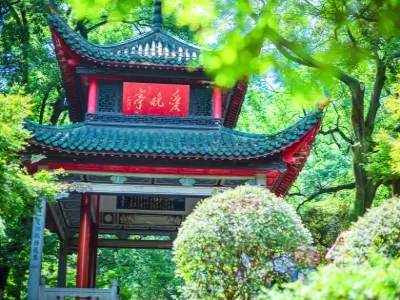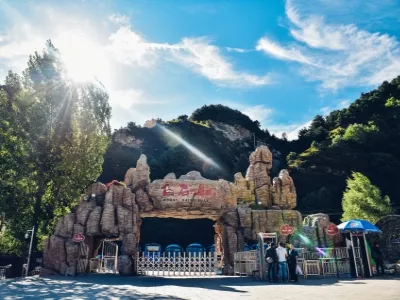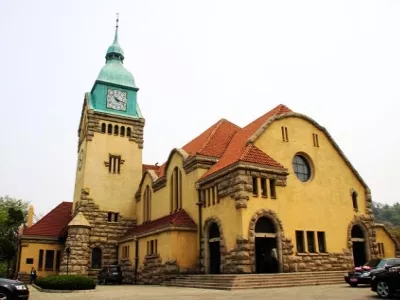Known as the hometown of the "Maba People", Shaoguan is the birthplace of the Shixia culture and boasts over 2,100 years of history. Historically hailed as the "Famous Prefecture of Lingnan", Shaoguan nurtured renowned figures like Hou Andu of the Chen Dynasty, Zhang Jiuling of the Tang Dynasty, Yu Jing of the Song Dynasty, and Liao Yan - the great Qing Dynasty literatus.
For 37 years, Huineng - the Sixth Patriarch of Chan Buddhism, spread dharma in Shaoguan, making Nanhua Temple the ancestral temple of the Southern Chan School.
Walk in the footsteps of ancient Maba people and venerated monks. Admire Buddhist art and mural paintings. Sample Hakka cuisine. In Shaoguan, discover over two millennia of culture and history.
Consumption level
Shaoguan has a relatively affordable cost of travel. Meals average around 20RMB per person at local restaurants. Budget hotels run about 150RMB per night. Taxi fares start at 7RMB.
To maximize your budget, opt for express business hotels located near top attractions like Danxia Mountain and Nanhua Temple. Use public buses and walking to get around for just 1-2RMB per ride. Enjoy local specialties like beef balls and wonton noodles from street food stalls.
By choosing budget accommodations, getting around via public transit and sampling inexpensive food, travelers can immerse themselves in Shaoguan's natural scenery and historic sites without overspending. Focus your time and money on just a couple highlights each day. With good planning, you can experience the essence of Shaoguan for around 200RMB or less per day. Treat yourself to a nice meal or show as your trip splurge.
The birthplace of the Southern Zen Sect
Nanhua Temple is a renowned ancient Buddhist monastery and the birthplace of Zen Buddhism's Southern Chan tradition in China. This is where the sixth Zen patriarch Huineng spread his influential teaching of "Sudden Enlightenment." As Huineng wrote, "Bodhi originally has no tree. The mirror also has no stand. Fundamentally there is not a single thing. Where can dust alight?" Wander through halls where some of Buddhism's greatest masters lectured and meditated. Reflect on Zen philosophy amid serene gardens, shaded by fragrant agarwood trees. Trace Huineng's journey from uneducated woodcutter to revered Zen master. As one of China's most important Buddhist sites, Nanhua Temple lets you immerse yourself in the storied history of Chan Buddhism. Here, Huineng's timeless teachings continue to guide truth-seekers on the path to enlightenment.
The stunning Danxia style
With its stunning red cliffs and peaks, Danxia Mountain fully lives up to its name, which means "cinnabar red." Over 680 isolated sandstone hills make up this iconic landform, also known as Mount Quehong Gang. Sheer crimson bluffs rise dramatically from gentler slopes blanketed in green forests. Layers of mineral-stained rock in rich hues of rust, orange, and burgundy twist into fantastical shapes. The highest peak, Bazhai, towers 619 meters. Formed over millennia by geologic shifts, water erosion, and mineral oxidation, Danxia's otherworldly beauty is unmatched. Lose yourself along the network of trails threading through valleys, cirques, and ravines. As the sun rises and sets, Danxia's ridges glow as if afire. This UNESCO World Heritage Site is a geology enthusiast and photographer's dreamscape.
The ethereal Grand Canyon
With its sheer cliffs, winding trails, and ethereal mists, Daxia Valley captivates at every turn. This grand gorge combines the wonders of Huangshan's peaks wreathed in billowing clouds, Hua Shan's vertiginous staircases, and Zhangjiajie's forested karst terrain. Like a traditional Chinese landscape painting brought to life, fog drifts through the valley as waterfalls plunge down sheer mountainsides. The sublime vistas along the 1,386-step Cloud Ladder live up to the valley's name, “daxia,” meaning “great gorge.” Lose yourself in the endless layers of ridges blanketed in lush forests. As you traverse trails through secluded monasteries and soaring natural bridges, Daxia Valley's scale and beauty will make you feel as though you've entered a mythical realm. Let your imagination wander freely through this spellbinding valley.
Religion and Culture
Religion and Culture of Shaoguan
Shaoguan has a long history of religious diversity, including Buddhism, Taoism, Christianity and Catholicism. Buddhism and Taoism have the most followers. Temple fairs like Nánhuá Festival continue to influence local culture today, with devotees incorporating religious elements into food, dress, and more.
As a multi-ethnic area populated mostly by Han Chinese as well as over 30 minorities like Yao, Zhuang, Hui, Manchu, and Miao peoples, Shaoguan is rich in varied ethnic customs. Local Lingnan Han Chinese practices blend with Yao and She ethnic traits. Business customs like choosing auspicious opening dates and shop signs, periodic markets, and trade credit are common.
Villages frequently feature clan-based settlement patterns, with homes sited per feng shui. Distinct housing styles include clan mansions, dragon-encircling homes, "four golden points" homes, arcade-style homes, walled compounds, and contemporary “small well-off” homes. Experiencing Shaoguan’s diverse religious and cultural tapestry offers visitors insight into the region’s heritage.
Best Travel Time
The abundant rainfall makes the land of Shaoguan evergreen throughout the year, making it suitable for tourism throughout the year. In addition, the scenery of Danxia Mountain varies throughout the four seasons, and the best travel season is from March to May in spring and from October to December in autumn.Dressing Guidelines
Shaoguan Clothing Tips
Shaoguan's temperatures start dropping around October, ranging 8-18°C in December. Warm up begins in April. Pack medium-weight sweaters and thick outer jackets, adding scarves for extra warmth. Bring comfortable athletic shoes for hiking.
March-April are the rainy season with cool, damp weather. Bring rain gear and thick coats when going out.
July-August are hot months. Light fabrics, shorts and sun protection are recommended.
Shaoguan transitions between defined cooler and warmer seasons. Lightweight clothes for summer and layered clothing for winter travels will ensure comfort exploring the city and surrounding areas. Proper footwear is also key for outdoor activities in this mountainous region. Adjusting dress based on monthly weather changes will keep visitors prepared.
Medical treatment
Here is some information on medical facilities in Zhangjiajie, China for an English travel website:Medical Care in ZhangjiajieZhangjiajie has numerous hospitals to meet healthcare needs, with some of the larger facilities being Zhangjiajie People's Hospital, Zhangjiajie Second People's Hospital, Zhangjiajie Traditional Chinese Medicine Hospital, and Zhangjiajie Red Cross Hospital. For those visiting the Zhangjiajie National Forest Park, nearby options are Lanma Hospital and Zhangjiajie National Forest Park Community Health Service Center.If staying near the central bus station or train station, convenient hospitals include Yongding District Rural Cooperative Medical Designated Hospital and Guanliping Hospital.With a good selection of hospitals and clinics, travelers in Zhangjiajie can readily access medical care if health issues occur. The proximity of quality healthcare ensures peace of mind while enjoying the iconic sandstone pillars, mountainous landscapes, and lush forests that make Zhangjiajie a top destination.Safety considerations
When at crowded places like train stations, bus terminals, and metro stations, keep a close eye on your belongings to prevent theft. Areas with high tourist traffic like Tiananmen Square also attract scammers, so tourists should be wary of unlicensed guides demanding money upfront. Avoid handing over any cash to solicitations on the street. Use registered taxi companies like the red Beijing taxis whenever possible. Keep valuables secured and hidden, avoid carrying large amounts of cash, and be alert in public transportation hubs and tourist sites. When needing assistance, go to authorized help points like the Beijing Tourist Information booths rather than individuals roaming the streets. Beijing is a generally safe city if simple precautions are taken. Report any incidents or suspicious activities immediately to the nearest police officer. They can also provide directions and other help. Enjoy sightseeing, but remain aware of the surroundings.





